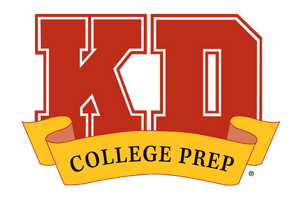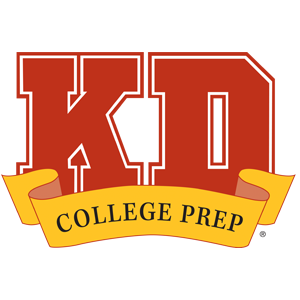If you’re new to college admissions in the U.S. or have never been through the process before, it can be tough to understand the definitions for all the different types of deadlines, application materials, financial aid options, or other common higher education terms.
While you don’t need to create flashcards to keep up with the lingo, it does help to understand the exact meaning for each term so that your family can make the right decisions when applying to college. That’s why we’ve created this college admissions glossary to keep you informed throughout the process.
College Admissions Glossary
ACT® Test
ACT stands for “American College Testing.” This is one of the two common standardized college admission tests (the SAT test is the other) that colleges generally accept for consideration. This test evaluates a high school student’s general preparedness for college and consists of five sections: English, Math, Reading, Science, and Essay (optional). It is scored on a scale of 1-36.
Accelerated Degree Programs
An accelerated degree program is one that reduces the amount of time it takes to obtain an undergraduate degree by at least one year. Most accelerated degree programs allow a student to obtain a bachelor’s degree in three years or less.
Activity List
An activity list is an overview of all the extracurricular activities you participated in while attending high school. Top colleges desire well-rounded candidates, and they use this to gauge your level of involvement outside the classroom.
Admission Rate
A school’s admission rate is the percentage of the total applicants the school accepts for admissions.
Admissions Test
A standardized test designed to evaluate high school students’ level of preparedness for college. College admissions officers often evaluate college admissions test scores to gauge a student’s knowledge level and to determine admittance. The two most commonly accepted admissions tests are the SAT and ACT exams.
AP® Classes
“AP” stands for Advanced Placement. AP classes offer college-level coursework and exams to gifted or academically advanced high school students. Some colleges may grant college credit or placement based on high AP exam scores. AP is a registered trademark owned by CollegeBoard.
Application Fee
Many colleges require students to pay application fees upon submission of college applications. These fees typically range from $25 to $100, depending on the college.
Application Fee Waiver
Colleges usually offer a fee waiver option for students who demonstrate financial need. It’s worth researching fee waivers, as sometimes schools will offer one as long as students meet certain criteria, such as going on an official on-campus visit.
ApplyTexas®
ApplyTexas is an application tool that allows you to apply to up to 53 colleges and universities in Texas. It usually becomes available on July 1st. Learn more about the ApplyTexas application.
Admission Requirements
Colleges usually provide basic guidelines for admission as well as additional requirements that apply to certain degree programs. These serve as a baseline for admission and can give you a general understanding of whether or not you have the academic credentials necessary for admission.
Articulation Agreement
This is an agreement between two academic institutions that recognizes credits toward a degree. This typically applies to students who are trying to transfer from one college to another. For example, a community college may have an articulation agreement with a four-year university that guarantees admission to a particular degree program if students meet certain guidelines.
Associate Degree
This is an undergraduate degree awarded to students after completing two to three years of coursework.
Certificate
A certificate is a credential that is earned upon completion of coursework and verifies a student’s knowledge of a particular subject or professional area of expertise. Some college students pursue certificates in addition to undergraduate or graduate degrees.
Class Rank
A student’s class rank estimates where a student’s academic profile falls when compared to other students in his or her high school class. Class ranking is often included on a student’s transcript and is sometimes reviewed on college applications. Some high schools no longer use class rankings. Read more about how class ranking influences admissions decisions.
CLEP
“CLEP” stands for the College Level Examination Program. It consists of a collection of standardized tests created by the College Board. Some colleges will use CLEP testing to allow students to earn college credit for the material they already know. Not all colleges accept CLEP tests, and some colleges will limit the amount of CLEP credit you can earn.
CollegeBoard®
College Board is a nonprofit organization founded in 1899 with a mission to promote the growth of higher education. It owns and administers the SAT®, PSAT, AP®, & CLEP® exams, among many other college admissions tools.
College Application Essay / Personal Statement
A college application essay or personal statement is a piece written by the applicant that gives students the opportunity to personalize their applications beyond test scores and academic credentials. Read more about how to write a winning college application essay.
College Credit Hour
Credit hours are a way to measure the amount of credit a student receives for completing a college course. Credit hours correlate to the number of hours per week a student spends in the classroom environment. Most four-year bachelor’s degree programs require the completion of a minimum of 120-130 credit hours, but the exact number will depend on the degree program.
College Decision Day
This usually falls around May 1st and is the approximate deadline for high school seniors to make their final college decisions. Actual decision deadlines will depend on the college.
College Interview
Some colleges require applicants to participate in a college interview as part of the college admissions process, honors program selection, or for merit-based scholarship awards. Interviews are often conducted by a member of the college’s alumni community and is an information gathering opportunity for the student. Colleges conduct interviews to evaluate a student’s compatibility with the college. Learn more about how to prepare for college interviews.
College List
A college list is the finalized collection of colleges for which a student plans to submit an application. We typically recommend that students apply to at least around 9-10 schools. Find more tips on how to create a balanced college list.
College Visit
A college visit (or campus visit) is a virtual or in-person tour of a college campus. Many colleges offer official campus visits that include student-led tours and information sessions hosted by the admissions office. Learn more about how to plan a college visit.
Common App®
The Common App is a popular college application tool accepted by 918 colleges around the world. Many students use this tool to submit to various colleges. The app allows you to submit applications to up to 20 schools. Learn more about the Common App.
Course Catalog
A course catalog is an overview of all the courses available at a college. You can find this catalog on the college’s website. This tool will list classes for each subject or degree program and provide additional details such as a description and how many credit hours are awarded upon completing the course. When enrolling, students use the course catalog to see what classes are available for the upcoming semester.
Common Data Set
The Common Data Set is a document that reports key information about a college, such as GPA, class rank, and average test scores of admitted students. All this information is not always available to the public, but many popular colleges and universities will publish their Common Data Set responses on their websites.
Dual Enrollment
Dual enrollment programs allow current high school students to earn credit for college-level courses before graduating from high school. Typically a student has to receive a C grade or higher in order to receive college credit. Not all colleges accept dual credit.
Dual Degree Program
Dual degree programs allow students to obtain multiple bachelor’s degrees in two majors or two degrees (i.e. bachelor’s and master’s) in one field of study. These programs feature a more rigorous program designed to save students time while preparing for their careers.
Deferred Decision
Deferred decision means that a college is still reviewing an application and will make a final admission decision at a later date. For example: If the applicant applied during the early decision or early action deadlines, this means the application has been moved to the regular decision pool.
Demonstrated Interest
Demonstrated interest is the way that a college evaluates a student’s level of enthusiasm and interest surrounding a college. Some colleges use college visits, emails, social media interaction, admissions event attendance, and other aspects to determine a student’s level of interest.
Demonstrated Need
Demonstrated need is the amount of money needed to afford the cost of college. This is calculated by subtracting Expected Family Contribution from the Cost of Attendance for a particular college. FAFSA® and the college will use this number to evaluate a student’s eligibility for receiving financial aid and scholarships.
Early Action
Early Action is a college application deadline that requires students to submit their applications early in order to receive a college’s decision well in advance of the school’s regular decision date. Unlike Early Decision, there is typically no binding commitment to attend the college if accepted, and the student can decline an offer if he or she chooses.
Early Decision
An Early Decision deadline allows students to submit their applications in advance of the regular decision deadline and requires these students to make a binding commitment to attend the college if admitted. For example, if a student submits an application to First Choice University under the Early Decision deadline and is accepted, he or she must accept the offer and withdraw any applications submitted to other institutions. Read more about the different types of college application deadlines.
Elective
An elective in college is similar to the electives offered in high school. An elective is a course taken for college credit that falls outside of the required courses for a degree. The number of elective classes one takes depends on the chosen degree program.
Expected Family Contribution (EFC)
Expected Family Contribution is a numerical figure that a college’s financial aid office and the government use to determine the amount of financial aid a student may receive. Many factors go into finding this amount, including family income, financial assets, and other related factors. The information entered on the FAFSA form is used to calculate EFC.
FAFSA®
FAFSA stands for “Free Application for Federal Student Aid.” Families use this form to apply for the financial aid sources that help many students afford the cost of college. The U.S. government and colleges use this form to determine eligibility for grants, loans, work-study jobs, and scholarships. The FAFSA usually becomes available on Oct. 1. More information is available on the FAFSA website.
Financial Aid
College is expensive, and many families struggle to find ways to pay for it. That is why colleges team up with the government to offer different forms of financial aid that help students afford to attend college. Grants, loans, work study programs, and scholarships are all forms of financial aid. To learn more about the types of financial aid that is available at a particular school, visit the college’s website.
Financial Aid Award Letter / Financial Aid Package
During the spring of 12th grade, colleges will often send award letters to students that describe the amount of financial aid for which they qualify. Some colleges will include scholarship amounts and loan options in the award letter. Colleges require students to take action in order to accept their chosen forms of financial aid. Schools will provide the deadline by which a student must respond. Read more about how to understand your financial aid package.
First Generation College Student
If your parents/guardians never attended college, then you may be considered a first generation college student. First generation college students sometimes qualify for special scholarships or financial assistance, and some colleges provide additional resources for this type of student.
Flagship University
A flagship university is often the most well-known public university in a university system. This college is usually the first state university established in the system and also tends to receive the most financial support from the state government. For example, the University of Texas at Austin is the flagship of the University of Texas system. The vast majority of flagship universities in the United States are accredited by the Association of American Universities and ranked Division I athletics by the NCAA.
Fraternity / Sorority / Greek Life
Fraternities and sororities are student organizations commonly found at American colleges. Traditionally, fraternities are made up of men, and sororities are made up of female members, although many colleges also offer coed organizations. Colleges often refer to these groups as “Greek Life” because their names consist of letters from the Greek alphabet, and they have chapter relationships across colleges nationally.
Gap Year
Some students choose to take a “gap year,” meaning they decide to take a semester or year off after graduating from high school and starting college. A student will typically spend a gap year traveling, taking advantage of a new experience, or discovering something new about oneself. If a student chooses to spend a gap year in a productive and interesting way, colleges often view the experience favorably. Whether you should take a gap year depends on your goals and where you plan to attend college.
Grade Point Average
Grade Point Average or GPA refers to a student’s average value of final grades earned in high school or college courses over time. Schools calculate this by summing up all final grades and dividing by the total number of graded units. In the U.S. GPA is typically calculated on a 4.0 scale. Some schools will provide additional value or weight for more advanced courses. “Weighted GPA” is a grade point average reflecting this additional value or weight.
Grants
A grant is a type of financial aid award that doesn’t have to be repaid.
Holistic Admissions
A holistic admissions process implies that a college tries to review a student’s application as a whole rather than only reviewing test scores or high school transcripts. However, college admissions officers rarely have more than a few minutes to go over each application, and strong test scores and good grades can certainly help move yours to the accepted pile.
Ivy League
The Ivy League is a group of some of the oldest and most highly selective colleges in the United States. Employers often view these schools as very prestigious. There are eight Ivy League colleges: Brown University, Columbia University, Cornell University, Dartmouth University, Harvard University, University of Pennsylvania, Princeton University, and Yale University.
In-State vs. Out-of-State Tuition
State public universities often charge different tuition amounts based on whether a student is considered a state resident. At public institutions, in-state students often pay less tuition than out-of-state students. State residency is determined by where a student (or parent/guardian) resides and pays taxes.
Legacy Applicant
Students who apply to the same college that a parent attended are considered legacy applicants. Legacy applicants often receive preference in college admissions. Some colleges even offer special scholarships to legacy applicants if they meet certain criteria. In some cases, a student may be considered a legacy applicant if other relatives graduated from the college (i.e. grandparent or sibling).
Letters of Recommendation
In college admissions, a letter of recommendation is a formal letter written by a teacher, high school counselor, or other person with special knowledge of a student. This letter advocates for a student’s acceptance to a college. Read more about how to ask for a letter of recommendation.
Liberal Arts College
A liberal arts college is a college that takes a classical approach to higher education. A liberal arts curriculum often puts a heavy emphasis on challenging students’ beliefs and training them to become critical thinkers. Courses tend to focus on the humanities, social sciences, and natural sciences, aiming to give students a well-rounded education.
Likely College
A likely college is one to which a student believes he or she has a very high chance of acceptance. Likely colleges are often schools where a student’s academic profile exceeds what is often accepted. The student would be happy to attend these colleges if his/her top choices don’t pan out.
Loan
A loan is a form of financial aid that is expected to be repaid. The U.S. Department of Education offers low-interest subsidized and unsubsidized loans to families who qualify for financial aid.
Major
A college major is the area of discipline a student plans to study while attending college. For example, a student who plans to become a teacher usually chooses education as his/her major.
Match College
A match college is a college with a moderate to high level of competition in which a student’s academic profile matches what is often accepted. In other words, a match college is a school where a student is pretty sure he/she will be admitted, but there’s a small chance of rejection.
Merit Scholarships
Merit scholarships are a form of financial aid often awarded to students who demonstrate high levels of academic excellence, athletic achievement, artistic talent, or other recognition. Not all colleges offer merit-based scholarships. Learn about the three common types of scholarships.
Minor
A minor is similar to a college major but requires a smaller course load to obtain. Many students choose to pursue one or two minors in addition to a bachelor’s degree focusing on a specific major.
National Merit®
The National Merit Scholarship Program is a competition that uses 11th grade PSAT scores to determine eligibility for national recognition and scholarships. Typically, only the top ½ percent of scores qualify students for National Merit Semifinalist status. From there, students complete additional tasks to further advance through the competition. Many colleges offer additional merit-based scholarships for National Merit recognized students in addition to awards provided by the National Merit Scholarship Recognition Program. Learn more about National Merit.
NCAA®
The NCAA stands for National Collegiate Athletic Association. This is the entity that regulates college student athletes across the U.S. The NCAA ranks schools as Division I, Division II, or Division III based on the level of their athletic programs.
Need-Based Aid
Need-Based Aid is provided by the U.S. Department of Education to students who demonstrate financial need. Grants, subsidized loans, and work study programs are forms of need-based aid.
Non-Need-Based Aid
Non-Need-Based Aid is provided by the U.S. Department of Education to students who are not considered need-based by the federal government. Unsubsidized and PLUS loans are forms of non-need-based aid. Not every student will qualify for these forms of financial aid, but we do recommend that every student fill out the FAFSA to find out his/her options.
Need-Blind Admission
Some colleges do not look at financial need when making admission decisions. A need-blind admissions policy means that the college will not consider an applicant’s ability to pay when deciding who will be admitted, waitlisted, or denied.
Priority Date or Deadline
A priority date or deadline means that applications submitted before the date will receive preference, but students who submit their application afterward can still be considered for admission.
Private vs. Public University
A public university is funded and operated by the state government, while a private university is usually run by a nonprofit organization or other private entity. Public universities tend to rely heavily on tax dollars while private universities secure funds through other means such as tuition and fees, alumni gifts, and endowments.
PSAT/NMSQT®
The PSAT/NMSQT is a practice version of the SAT test that is usually offered once per year by high schools throughout the U.S. The 11th grade administration of the PSAT is used to determine student eligibility in the National Merit Scholarship Recognition Program.
Reach College
A reach college is one that a student would like to attend but may not be accepted into due to high competition or because his/her academic profile falls below what is typically accepted. Ivy League colleges, and similarly competitive universities, are considered reach schools for all applicants.
Regular Decision
A regular decision is a non-binding application deadline with due dates ranging from November to March. Many colleges only offer Regular Decision deadlines, and the majority of students will apply during the Regular Decision round of college admissions.
Retention Rate
In college admissions, retention rate typically refers to the percentage of first year students who return for their second year of college. In other words, the percentage of students at a college who do not flunk out, drop out, or transfer before sophomore year.
Rolling Admission
Rolling admission means that there isn’t a hard-and-fast deadline for college applications. The college will accept applications until all spots are filled. Rolling admission is non-binding. In other words, students are given a general timeframe to submit an application rather than having to submit before a specific date.
SAT® Test
The SAT test is a widely-accepted, standardized college admissions test that evaluates a student’s level of academic preparedness for college. The test is scored on a scale ranging from 400-1600 points and consists of two main sections: Evidence-Based Reading & Writing and Math.
Scholarship
A scholarship is a form of financial aid that doesn’t need to be repaid. Students usually have to meet specific criteria to qualify for a scholarship. Scholarships are often provided by colleges, school districts, or private entities.
School Profile
A school profile is a document typically sent to admissions officers alongside a student’s transcript. This tool provides admissions officers with an overview of high school details such as class size, class ranking policy, and list of available AP and honors classes. Colleges understand that not all high schools provide the same opportunities, and they use school profiles to understand the range of opportunities and context in which credits are earned at that school.
Self-Reported Academic Record (SRAR)
Some colleges require applicants to self-report their high school record and test scores rather than rely on high schools or testing organizations to submit them. Instead, 12th graders obtain a copy of their transcript from their high school counselor and enter the information into their college application. It’s important to keep information factual since most colleges will eventually check the official transcript. Students will have to attest that all information submitted to the college is factual.
Student-Faculty Ratio
Student-faculty ratio is a numeric figure that is calculated by dividing the number of enrolled college students by the number of faculty members at the institution. Colleges often use low student-faculty ratios as a selling point to demonstrate the high percentage of teachers related to the college’s size.
Superscore
A superscore is a test score derived from a student’s best sub-section scores from multiple attempts at the ACT or SAT test. Superscores are becoming more widely accepted by colleges in the U.S.
Supplementary Materials
Some colleges offer the option for students to submit “supplemental materials” such as art projects, creative writing samples, or academic papers. This gives students the opportunity to showcase a talent, skill, or achievement that cannot be demonstrated through the application alone.
Traditional vs. Nontraditional
A traditional college applicant is a student who plans to start attending college soon after graduating from high school. Nontraditional tends to refer to applicants who took a less typical route and are pursuing an undergraduate degree at an older age, after receiving their GED, or after military service.
Test Optional vs. Test Blind
Test optional college admissions usually means that the college will accept test scores as part a college application, but scores are not required for admission. Some colleges practice “test blind” admissions meaning that scores will not be factored into an admissions decision at all. Colleges may set or change policies to meet the needs of their institution, eve
Transcript
A high school transcript is a record provided by the school that lists a student’s completed classes, grades, grade weight, cumulative GPA, and other details about his/her academic history while in high school. High schools send official transcripts directly to a college while unofficial transcripts can be obtained by a student and then submitted as part of a college application.
Undecided or undeclared
If students are unsure of what they plan to major in when starting college, they may select “undecided” or “undeclared” as their major and make a decision at a later date. Some colleges will place undecided students into a category such as “General Studies.”
US World & News Report
The US World & News Report is a publication known for its variety of lists, especially its list of college rankings. This list of college rankings is based on a wide range of criteria that the publication deems important. We recommend that students do not base their college decision off these rankings alone as it is not always a good indicator of a college that will meet the needs of every student.
Waitlist
A waitlisted application means that the college has finished reviewing your application and has placed you on the waiting list. Being waitlisted is different than being deferred. The chances of being admitted off a waitlist will depend on the available spots for admission after May 1. Waitlisted acceptances usually roll out in May-July with some students finding out as late as August.
Work-Study
A work-study program is a form of need-based aid that provides students with part-time jobs to help afford the cost of attending college. Your award will determine the number of hours available. Not all colleges provide work-study jobs. You’ll need to contact a college’s financial aid office to find out if it participates.
Yield
The percent of students who applied and followed through with enrolling in a college after acceptance.
Still have questions?
Our team is here to help your family through the college admissions process. We offer college counseling and test prep services to help your student make the right decisions. Sign up for a free consultation with a member of our team.














































